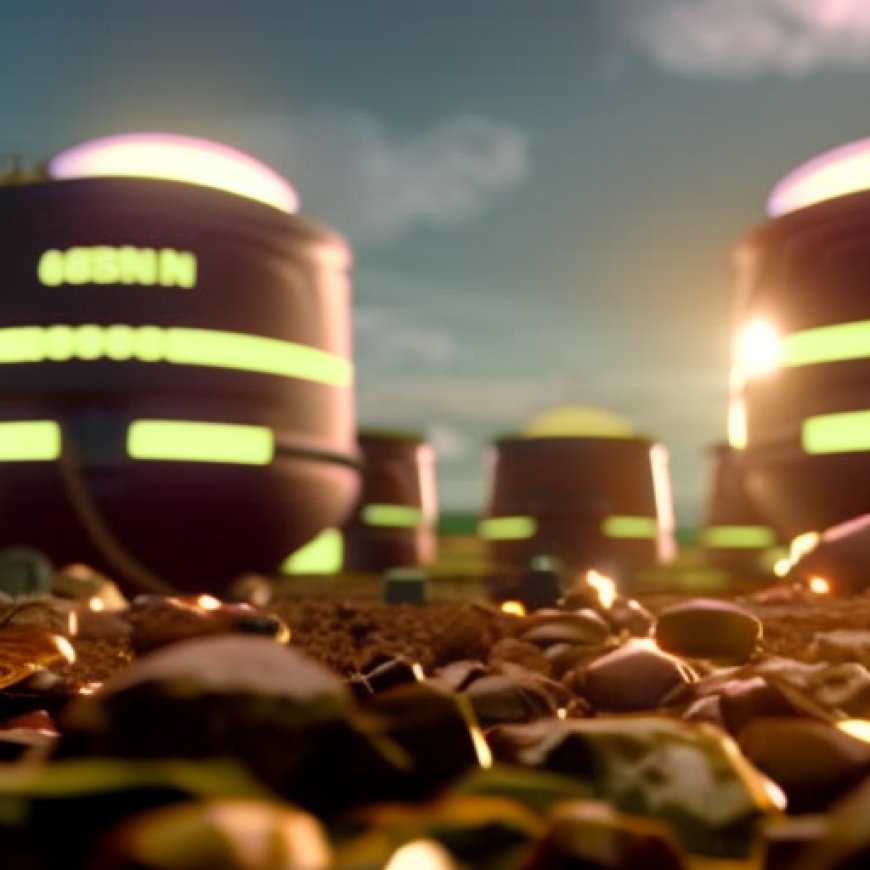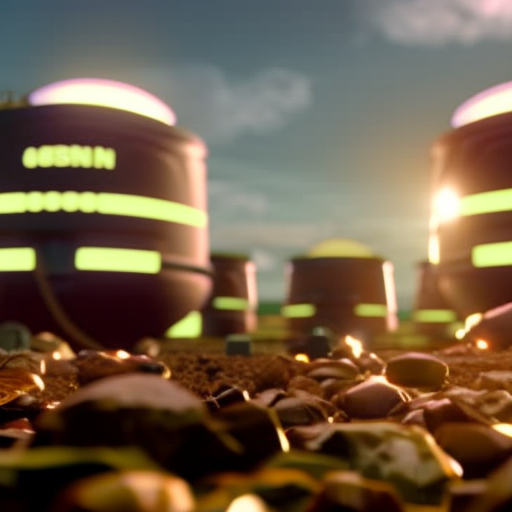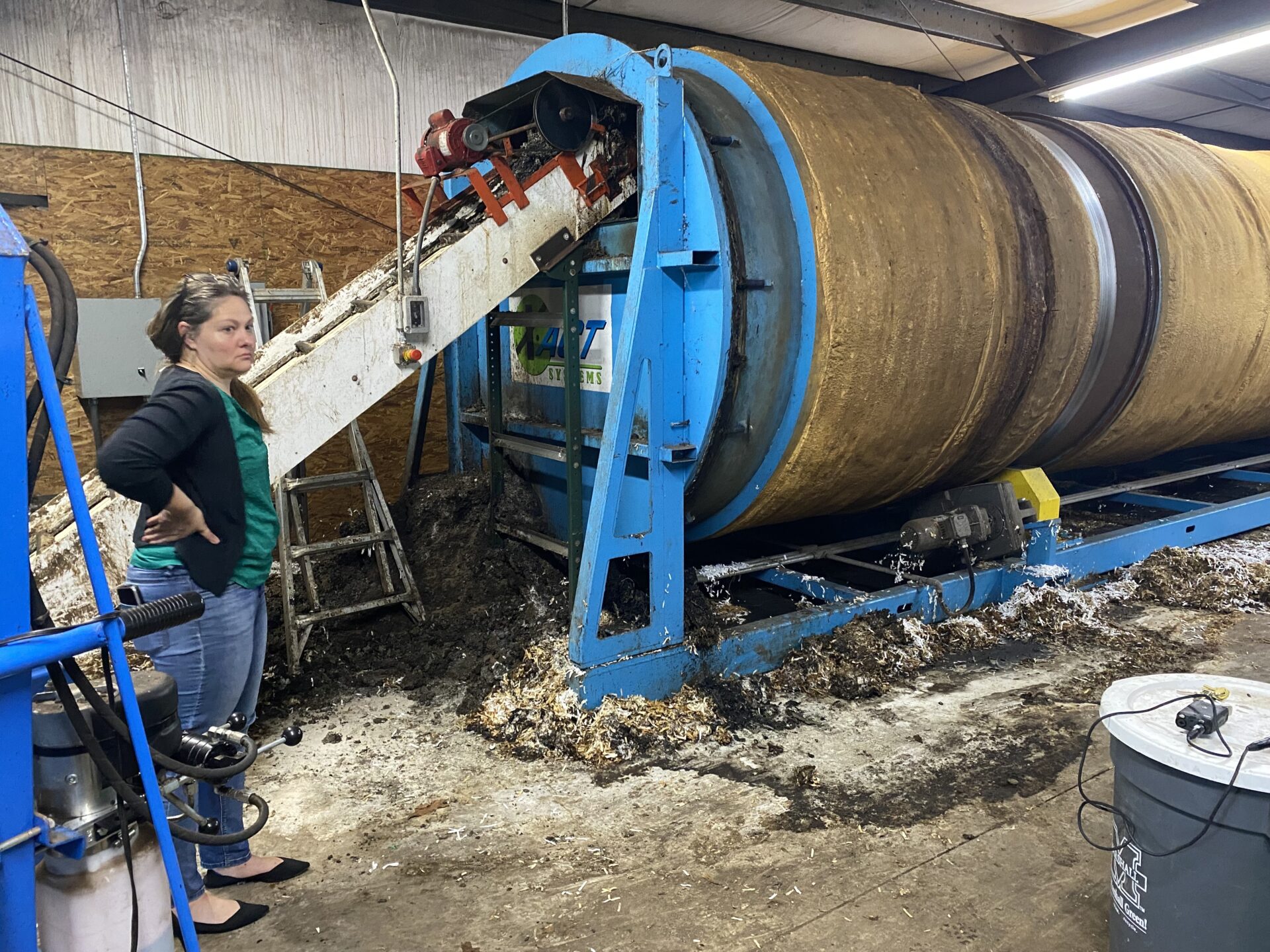Marshall Composting Facility Advances Cutting Edge Environmental Technology – West Virginia Public Broadcasting
Marshall Composting Facility Advances Cutting Edge Environmental Technology West Virginia Public Broadcasting


Earth Day: Marshall University Leads the Way in Composting and Sustainability

Monday is Earth Day, an annual reminder of the growing importance of environmental conservation and sustainability.
The Significance of Recycling and Composting
Recycling is a major component of sustainability – and composting highlights recycling at the organic level. At Marshall University, West Virginia’s first commercial composting facility is spinning its wheels.
Marshall University’s Composting Initiative
During lunch at Marshall University’s spacious Harless Dining Hall, staff members serve hundreds of meals, leaving food waste in the prep kitchen and on students’ plates. Marshall Dining Field Marketing Coordinator for Sodexo, Christopher Estrada, said there was a plan to unload those pounds of scraps.
- We tried giving it to a pig farm, but the farmer stopped showing up to pick up the scraps.
Beginning about a year ago, Estrada said food waste removal at all of Marshall’s dining facilities took a new exit route.
- All trims from vegetables and leftovers are thrown into a green container with anything that’s organic, including paper, bones, and other recyclable materials.
- Consumer waste is also sorted and thrown into the container.
At Marshall’s Composting Facility, a few miles off campus, the XACT Systems Bioreactor’s rotation drum slowly spins waste into compost.
Marshall Sustainability Manager Amy Parsons-White said Marshall is the only university in the world with this level of technology. She said it provides the ultimate in environmentally friendly aerobic digestion. The bioreactor turns organic material into compost in as little as six days.
- Marshall University started taking all food waste, paper, cardboard, lawn waste from the campus, as well as horse manure from Heart of Phoenix horse rescue, and digesting it in their aerobic digester.
- They are the first university to ever take on this level of composting technology.
The composting facility brings in around 15 32-gallon barrels of food waste a day, along with 10 50-pound bales of shredded paper. In addition to feeding the mechanical digester, waste goes into a giant worm bin, where more than 50,000 red wiggler worms compost another three tons of waste each day.
Parsons-White said it took some legislative law changes to make the facility work.
- A law that prohibited the commercial composting of food waste was changed to allow Marshall University’s composting facility to operate.
- They hope this will be a pilot program for the rest of the state to encourage the establishment of compost facilities all across West Virginia.
The finished compost product, used by the campus landscaping crew and sold commercially, has so far saved around 300 tons of carbon from going into the atmosphere.
Future facility plans include:
- Involving the community in composting efforts
- Offering advanced agriculture-related student classes
- Creating a statewide network of composting facilities
Parsons-White believes that West Virginia has the potential to become an agricultural hub, as it is within eight hours of 84 percent of the population of the United States and there is a high demand for compost.
Corporate Commitment to Sustainability
Back in the campus lunchroom, Estrada, who helps lead Marshall’s corporate food partner Sodexo’s duties, said the composting effort is part of a national corporate push to reduce carbon footprints.
- Sodexo has been working hard to improve its carbon footprint, and the composting initiative at Marshall University is a significant step in that direction.
- The students feel better knowing that their food waste is not being wasted and is being reused instead of going into the garbage.
Meanwhile, the XACT Systems Bioreactor keeps on composting.
SDGs, Targets, and Indicators
1. SDGs Addressed:
- SDG 12: Responsible Consumption and Production
- SDG 13: Climate Action
- SDG 15: Life on Land
2. Specific Targets:
- SDG 12.3: By 2030, halve per capita global food waste at the retail and consumer levels and reduce food losses along production and supply chains, including post-harvest losses.
- SDG 13.3: Improve education, awareness-raising, and human and institutional capacity on climate change mitigation, adaptation, impact reduction, and early warning.
- SDG 15.3: By 2030, combat desertification, restore degraded land and soil, including land affected by desertification, drought, and floods, and strive to achieve a land degradation-neutral world.
3. Indicators:
- Indicator for SDG 12.3: Amount of food loss along production and supply chains (not explicitly mentioned in the article, but implied by the focus on reducing food waste)
- Indicator for SDG 13.3: Number of educational programs or initiatives on climate change mitigation and adaptation (not explicitly mentioned in the article, but implied by the mention of educating students and involving them in composting)
- Indicator for SDG 15.3: Percentage of land restored or rehabilitated (not explicitly mentioned in the article, but implied by the focus on composting to improve soil health)
Table: SDGs, Targets, and Indicators
| SDGs | Targets | Indicators |
|---|---|---|
| SDG 12: Responsible Consumption and Production | Target 12.3: By 2030, halve per capita global food waste at the retail and consumer levels and reduce food losses along production and supply chains, including post-harvest losses. | Indicator: Amount of food loss along production and supply chains |
| SDG 13: Climate Action | Target 13.3: Improve education, awareness-raising, and human and institutional capacity on climate change mitigation, adaptation, impact reduction, and early warning. | Indicator: Number of educational programs or initiatives on climate change mitigation and adaptation |
| SDG 15: Life on Land | Target 15.3: By 2030, combat desertification, restore degraded land and soil, including land affected by desertification, drought, and floods, and strive to achieve a land degradation-neutral world. | Indicator: Percentage of land restored or rehabilitated |
The article addresses or is connected to the following SDGs:
– SDG 12: Responsible Consumption and Production, as it discusses the importance of reducing food waste through composting.
– SDG 13: Climate Action, as it mentions the role of composting in reducing carbon footprints and removing carbon from the atmosphere.
– SDG 15: Life on Land, as it highlights the use of compost to improve soil health and combat desertification.
Based on the article’s content, the specific targets that can be identified are:
– Target 12.3: By 2030, halve per capita global food waste at the retail and consumer levels and reduce food losses along production and supply chains, including post-harvest losses.
– Target 13.3: Improve education, awareness-raising, and human and institutional capacity on climate change mitigation, adaptation, impact reduction, and early warning.
– Target 15.3: By 2030, combat desertification, restore degraded land and soil, including land affected by desertification, drought, and floods, and strive to achieve a land degradation-neutral world.
The article mentions or implies the following indicators that can be used to measure progress towards the identified targets:
– Indicator for SDG 12.3: Amount of food loss along production and supply chains.
– Indicator for SDG 13.3: Number of educational programs or initiatives on climate change mitigation and adaptation.
– Indicator for SDG 15.3: Percentage of land restored or rehabilitated.
These indicators are implied by the focus on reducing food waste, educating students about composting and climate change, and improving soil health through composting.
Overall, the article highlights the importance of composting in achieving sustainable development goals related to responsible consumption and production, climate action, and life on land. The specific targets and indicators identified provide a framework for measuring progress towards these goals.
Behold! This splendid article springs forth from the wellspring of knowledge, shaped by a wondrous proprietary AI technology that delved into a vast ocean of data, illuminating the path towards the Sustainable Development Goals. Remember that all rights are reserved by SDG Investors LLC, empowering us to champion progress together.
Source: wvpublic.org

Join us, as fellow seekers of change, on a transformative journey at https://sdgtalks.ai/welcome, where you can become a member and actively contribute to shaping a brighter future.







